8 Social Media Marketing Trends to Notice in 2024

What’s changing in the new year?
More than ever before, businesses and individuals are looking to social media to make their mark. Digital marketing trends is more and more popular. Today people crave personal engagement because they know the advantages of social media. Mass marketing efforts and lavish advertising campaigns no longer impress consumers — all it takes is a social media strategy.
Ignite Visibility corroborates their findings with some business-centric data of their own. According to their report:
- 90% of marketers say that social media marketing has increased exposure for their brand.
- 75% of marketers saw an increase in traffic thanks to social media marketing.
- 48% of Americans have interacted with a company on social media.
How can you harness the power of social media for your brand? We already explained how to make a successful social media strategy from scratch, but the challenge here lies in how fluid social media marketing is — at the forefront of the online frontier, social media is constantly changing, evolving, and adapting to meet new demands and user expectations.
So to keep you up-to-date and ahead of the curve, we list out 8 of the newest and best social media marketing trends on the rise for next year. Take a look below to make sure your social media strategies stay fresh and cutting edge.
1. Live and Streaming Videos
Video, in general, has been a rising social media trend for years. Users just seem to love video content, and with better tech and more accessible data, videos become easier to watch and upload every year. On average video posts perform well no matter which social media platform, especially compared to text-only posts.
But currently, the video trend is entering some new ground. In many ways, 2024 is a year of video content, but we’ll break it down as two separate trends. The first is live and streaming video.
YouTube, Facebook, and now Instagram offer live video services for their users, turning this once-optional feature into a social media staple. In just two years since Facebook Live launched to let users stream real-time video, there have been 3.5 billion broadcasts.

Source: Facebook Live with Jane Goodall
Why is live streaming preferable to other preplanned video posts? For companies, it’s a shortcut strategy for trust and transparency. Considering the social climate of recent years, people have grown less trusting of brands and institutions, meaning companies have to try harder to prove their authenticity. The honesty of a live broadcast — where mistakes can’t be edited — offers companies some much-needed openness and humility to appeal to modern consumers.
2. Generation Z is the New Millennials
Over the last few years, digital marketers have been focusing a lot on Millennials, the generation of people born between the early 80s and late 90s. Because Millennials are the first generation to grow up with the internet, buying behaviors and online activities vary greatly from other generations, making them immune to most conventional methods of advertising and a thorn in the side of traditional marketers.
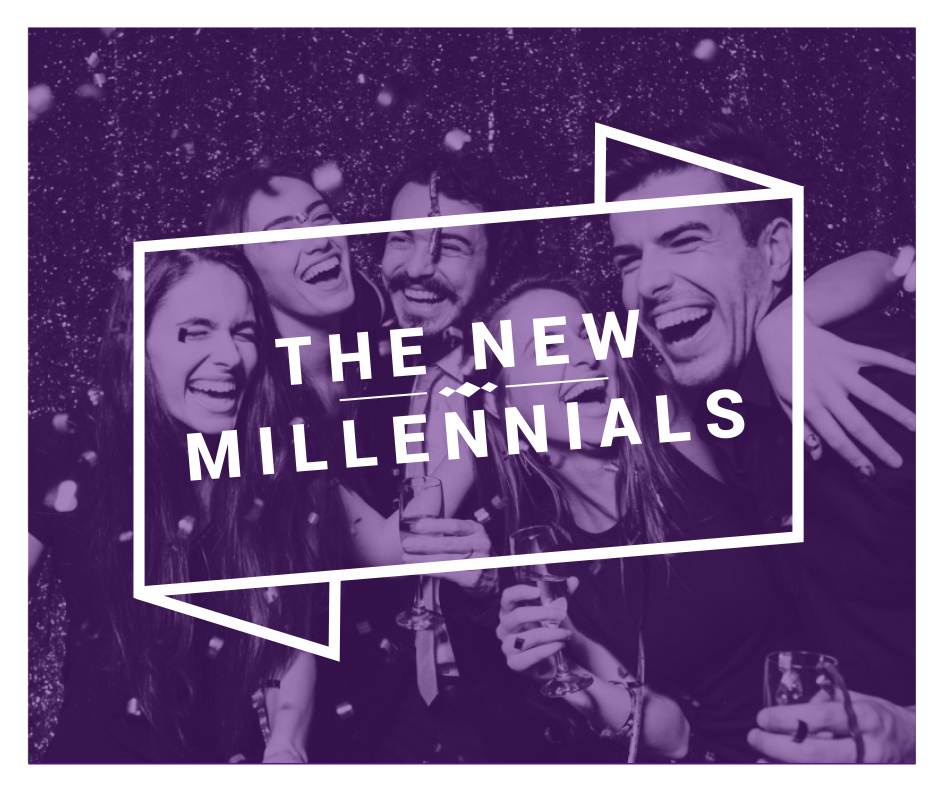
But their reign as the most coveted demographic is starting to waver recently, as the next generation reaches maturity. Generation Z, those born around the turn of the century or after, are just now starting to get jobs and earn disposable incomes. The oldest among them have even officially reached adulthood already.
Digital marketers are now seeing these “children” in a new light, targeting them as viable customers for now to cement a good relationship with them for later. The problem is that, if traditional marketers don’t even understand Millennials, how can they possibly grasp the even more unpredictable Generation Z?
In practical terms, Generation Z seems to have a penchant for the absurd and surreal, which is hard to mimic. When marketing to teens, you have to speak their language. The best approach is to hire a young professional who can do this naturally, otherwise, you’ll have to learn the style and tone yourself as an outsider.
This trend also places more emphasis on Snapchat, the most popular social media platform for teens. If you want a direct link to this customer group, Snapchat is where you find them. Just be aware that, because Snapchat automatically deletes most posts after a certain time, using the platform is a bit different than other social media. There’s a slight learning curve.
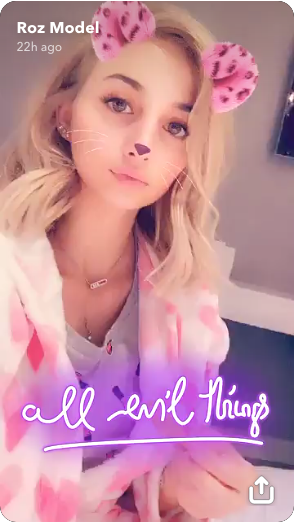
Source: Snapchat
The good news is that Snapchat recently launched a series of new advertisement options to make it easier for “adults” to take advantage of its platform. You can now buy “Collection Ads,” which feature multiple products at once and allow for users to customize choose ads for products they want to see.
Like their other ads, Collection Ads are interactive, meaning users can see product details or go to the product page straight from the ad. This makes them particularly effective for industries reliant on visuals, such as fashion.
3. Vertical Videos
It’s strange seeing professionals advocate vertical (portrait-style) videos — many webizens decry vertical videos as being a nuisance and inferior to horizontal (landscape) shoots. If you’re looking for someone to blame, we have Instagram to thank for lobbying the change in public opinion.
Instagram’s IGTV app launched in June as a means for users to share long-form video content, as opposed to the momentary seconds-long loops on their main app. IGTV seems to position itself as YouTube for mobile, but that means encouraging people to take videos exclusively for mobile viewing — hence the vertical framing.
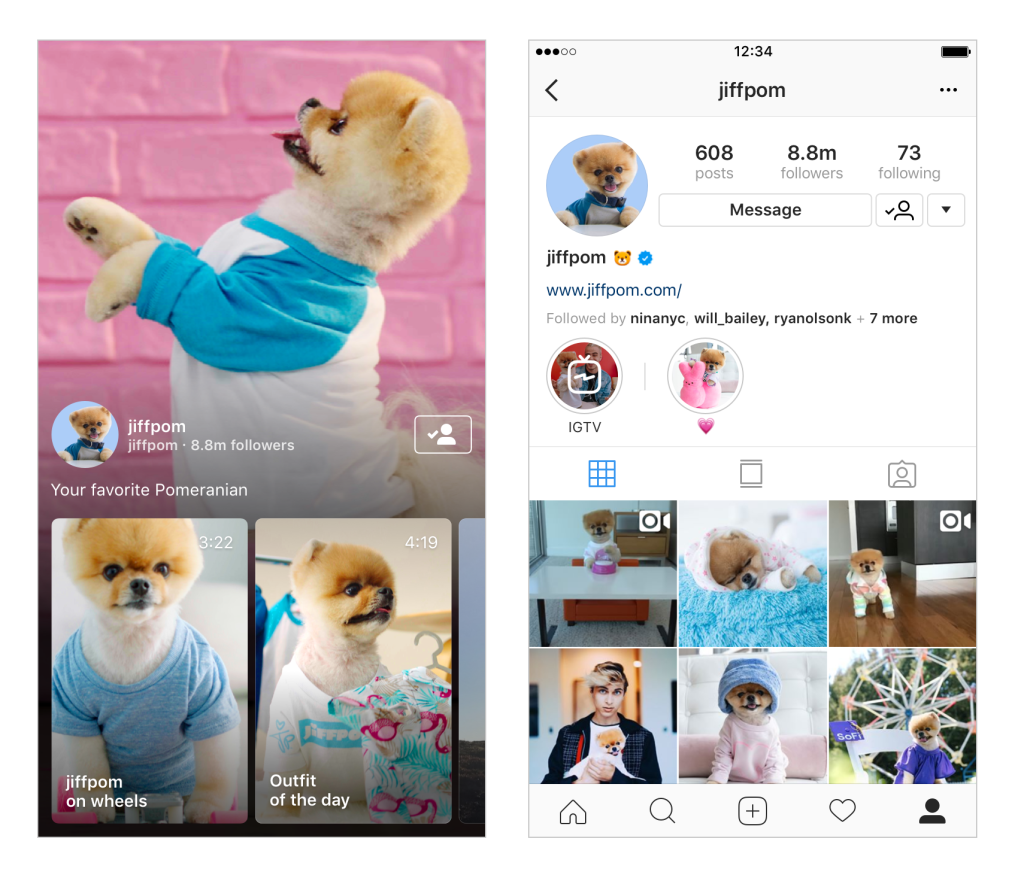
Source: IGTV
The trend has now caught on elsewhere, particularly on Snapchat, a platform that also benefits from videos made for and with smartphones. The trend has even caught on with the music industry, with more and more musicians shooting vertical music videos to cater to fans watching on mobile devices. Shooting vertical videos comes naturally to almost all (94%) phone-users anyway, as that’s their preferred position for using their phones. If you already shoot your video in horizontal ration you can use Magisto’s online video maker to convert them into vertical videos.
To put it simply, if you’re making videos for social media, you have more to gain shooting in vertical than in horizontal. Vertical is the mobile-friendly option, and as of 2023 mobile devices are now more popular than desktop for using the internet. Sure there are aesthetic drawbacks to shooting vertical, but unless you’re the next Kubrick, those snags are worth the better performance on social media.
4. Paid Social Media Ads
Considering factors like brand awareness and customer engagement alongside actual sales, social media advertising has an impressive return on investment (ROI). With business trends leaning closer to personal customer relationships than simply undercutting your competition’s prices, a direct line to your audience like in social media can be more valuable than a 50-foot billboard.

Advertising on social media gives marketers greater control over who sees their ads, which means less money wasted on targeting non-customers. Perhaps that’s why social media ad spending nearly doubled between 2020 and 2023, going from $16 billion to $31 billion.
This trend is far from slowing down, too; in fact, in 2024 social media advertising is expected to become even more lucrative. Around half of all Millennials and Generation Z (42% and 50% respectively) consider social media to be the best avenue for advertising because products suggestions are personalized to the user.
However, the same peculiarities that make social media a strong advertising medium also make it hard to break into. Social media ads behave differently than other ads, and so they need to be designed differently.
When creating a social media ad, think of it as a post more than an ad. Follow the same fundamental rules of social media posting — emphasize visuals, speak directly to your audience, use popular content themes, etc.

An online editing tool like ours makes it easy to create professional-looking social media posts, even if you’ve never used one before. With Fotor, you can even use one of our many templates; all you have to do is input your own personal information to make it your own.

Fotor
Over 100,000+ ready-to-use templates and creative content for graphic design and photo collages.
Millions of HD stock photos for personal and commercial use.
5. Influencer Marketing
Social media’s reliance on people being “social” is right there in the name. That should suggest to you that, if you want to promote your brand or even just yourself, you can enlist the help of other users. That’s the heart and soul of influencer marketing, a technique involving other more popular social media users advocating for you.
A social media influencer is anyone regarded as an authority in a certain field, so much so that their followers trust whatever products or brands they recommend. Influencers come in different shapes and sizes, big and small, for every industry. A fashion blogger whose selfie of a new outfit creates a spike in sales is seen as a fashion influencer; a tech guru who’s scathing review halts sales on a new gadget is a tech influencer; and so on.
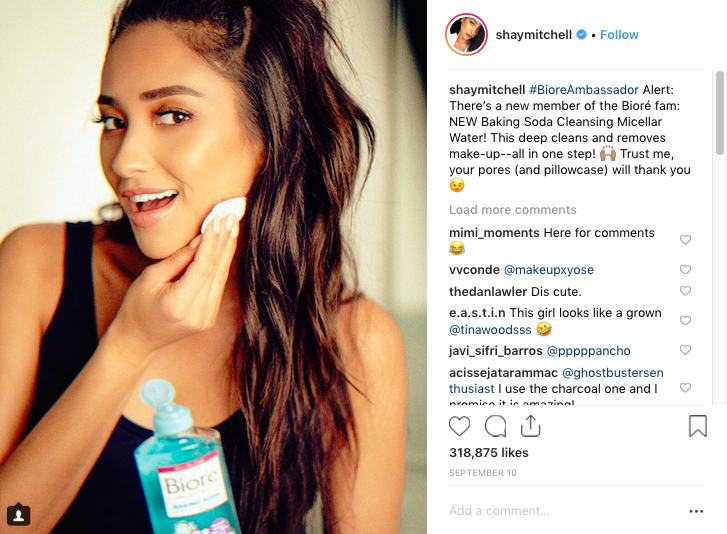
Source: Instagram
Getting mentioned by an influencer is often better for business than a highly publicized ad. Modern consumers, especially the younger generations, are increasingly skeptical of sponsored content, so advertising through influencers circumvents this mistrust. Because your recommendation is reaching users through a trusted voice, it’s a vote of confidence that can promote your brand far greater than a paid advertisement.
How you approach influencer marketing can vary, but under certain circumstances, it can sometimes be more cost-effective than traditional ads. Sometimes all it takes is sending the influencer a free gift and they’ll review or post about it on their own. At the very least, you could tag them in one of your posts in hopes they’ll share it to their followings; but for this strategy to succeed you’ll need a social media graphic post worth reposting.
Of course, the more popular the influencer is, the harder they’ll be reached. Bigger influencers may even have a structured payment system in place, as that’s their main source of income.
Because influencer marketing has become so popular, marketers have started targeting what they call “micro-influencers,” which really just means normal social media users. If you get enough normal people talking about you, that can have as much of an impact as being mentioned once by a popular influencer, which brings us to our next trend…
6. User-Generated Content
The lifeblood of all social media is user-generated content. If no users are there to create content, no new users will show up to view it. Facebook, Twitter, Snapchat, Instagram, Pinterest, Tumblr, LinkedIn — that’s the model they all use. And as marketers have been discovering over the last few years, if you can tap into that model, you can get users to generate a buzz stronger than any single ad or post.
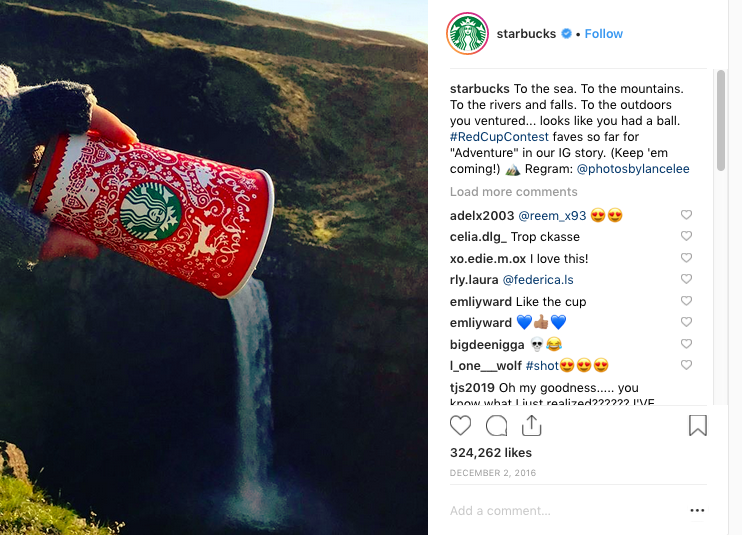
The best way to encourage more user-generated content about your brand is to offer an incentive. The classic approach is a contest — if users post a picture about your brand, they receive a reward, typically a chance to win a raffle or maybe an exclusive discount code. When done well, like Starbuck’s annual #RedCupContest, these campaigns actually get users excited about posting about your brand.
If you want your user-generated content campaign to succeed, you have to use hashtags. For one thing, this makes it easier for you to track who is participating and who is not when you dole out rewards. Another advantage is publicity — trending tags will appear in other people’s feeds, making them curious about participating themselves. But more than that, hashtags also add a spirit of community. They make participants feel part of something greater… and isn’t that what social media is all about.
If you’re looking to curate all your social media content from different platforms, you should take a look at Sutori. This alternative to Storify allows you to create interactive presentations from all your existing web mentions. You can embed your presentations directly to your website for added engagement.”
7. The Rise And Use of Generative AI
Artificial intelligence (AI) is set to revolutionize the way social media users experience personalized content. AI-driven chatbots and recommendation systems are poised to elevate customer interactions and deliver tailored content based on individual preferences. Marketers can harness the power of AI to craft customized messaging, recommendations, and ads, strengthening customer relationships. This past year witnessed the mesmerizing ascent of Artificial Intelligence, epitomized by tools like ChatGPT.

Now that AI has firmly established its presence, it's poised to emerge as one of the most rapidly growing trends in social media advertising. The utilization of generative AI is set to expand across various domains, from identifying trending topics for strategic utilization to enhancing content creation processes and generating personalized ad copy and visuals for diverse target audiences.
8. Channel-specific Content
Last but not least, the popularization of social media also means its divergence. It’s become such an enormous phenomenon that one or two or even three social media platforms can’t satisfy everyone. And the more social media platforms that crop up, the more effort brands have to put into customizing their posts.
In the past, you could have gotten away with posting the same exact content on all of your social media accounts. The same fun picture could be uploaded to Facebook, Twitter, and Pinterest with similar success on each.
But now that social media platforms are becoming more niche and specialized, users on each platform have different expectations. Facebook users may want longer captions to add context to the post, while Instagram users may not even bother glancing at the captions. A business infographic that killed on LinkedIn may not get a single like on Tumblr.
Moving forward in 2024, it’s important to understand the distinctions between platforms and cater your content for each. You need to change up your graphics design, chosen topics, and types of content through the best online photo editor to match the different audiences. In other words, the days of reusing the same content on each platform are over. Creating different and fresh content is not enough. You also need to make a plan for posting them at the proper timing. And social media scheduling tools like SocialPilot come out as a savior in customizing social media posts for individual platforms.
But now that social media platforms are becoming more niche and specialized, users on each platform have different expectations. Facebook users may want longer captions to add context to the post, while Instagram users may not even bother glancing at the captions. A business infographic that killed on LinkedIn may not get a single like on Tumblr.
It goes without saying that you first need to learn the preferred style and tone of each platform, along with the specific rules on formats. For example, recipes do well in Pinterest, but not Twitter; infographics get more views on Facebook than Instagram, etc. Then you have to consider each platform’s specific rules on formats; Instagram allows you to include multiple pictures in the same post, but other channels don’t. Finally, there’s the size and shape of the images themselves.
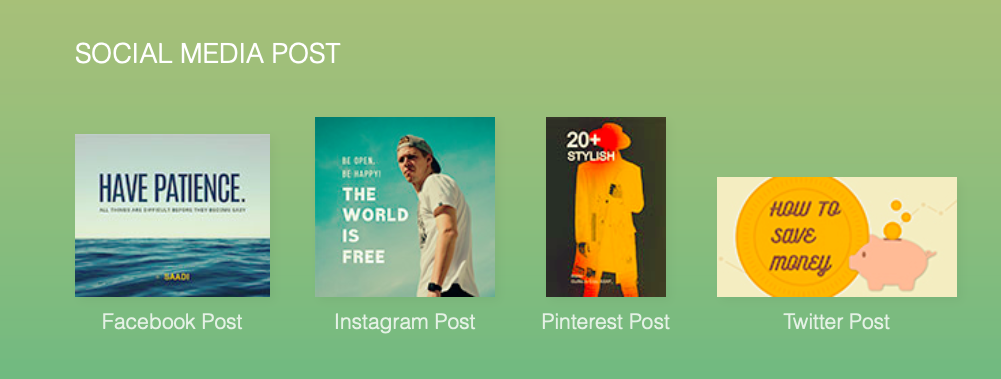
The more you use social media, the more you’ll pick up on the differences between them. Fotor also provides a bit of a shortcut for these, with preset formats that automatically optimize the size for each platform. There’s also plenty of theme templates to choose from, from inspirational quotes to event promotion, which has already been adapted to whichever platform you choose.

Keep in mind that each platform attracts different types of users, for example, Snapchat attracts teens and students, while LinkedIn is more popular with 40+ professionals. Diving deeper, each platform’s users have their own identities, so the teens who use Snapchat have different tastes than the teens who use Instagram.
Unfortunately, the only way to truly master a social media channel is through practice. If you’re expanding on many different channels, this can be exhausting and time-consuming, so it might help to first prioritize your most important channels. Start by perfecting your strategy on your top platforms before learning the nuances of less-important ones.

Conclusion
Social media’s influence on business grows stronger every day, to say nothing about its influence in other aspects of the world. More and more, a company’s success becomes tied to how well they can navigate the social media landscape. The sooner you implement the above trends and learn the ins and outs of each network, the better prepared you’ll be later when the trends shift again. By this time next year, you could be the one starting the trends rather than following them.








